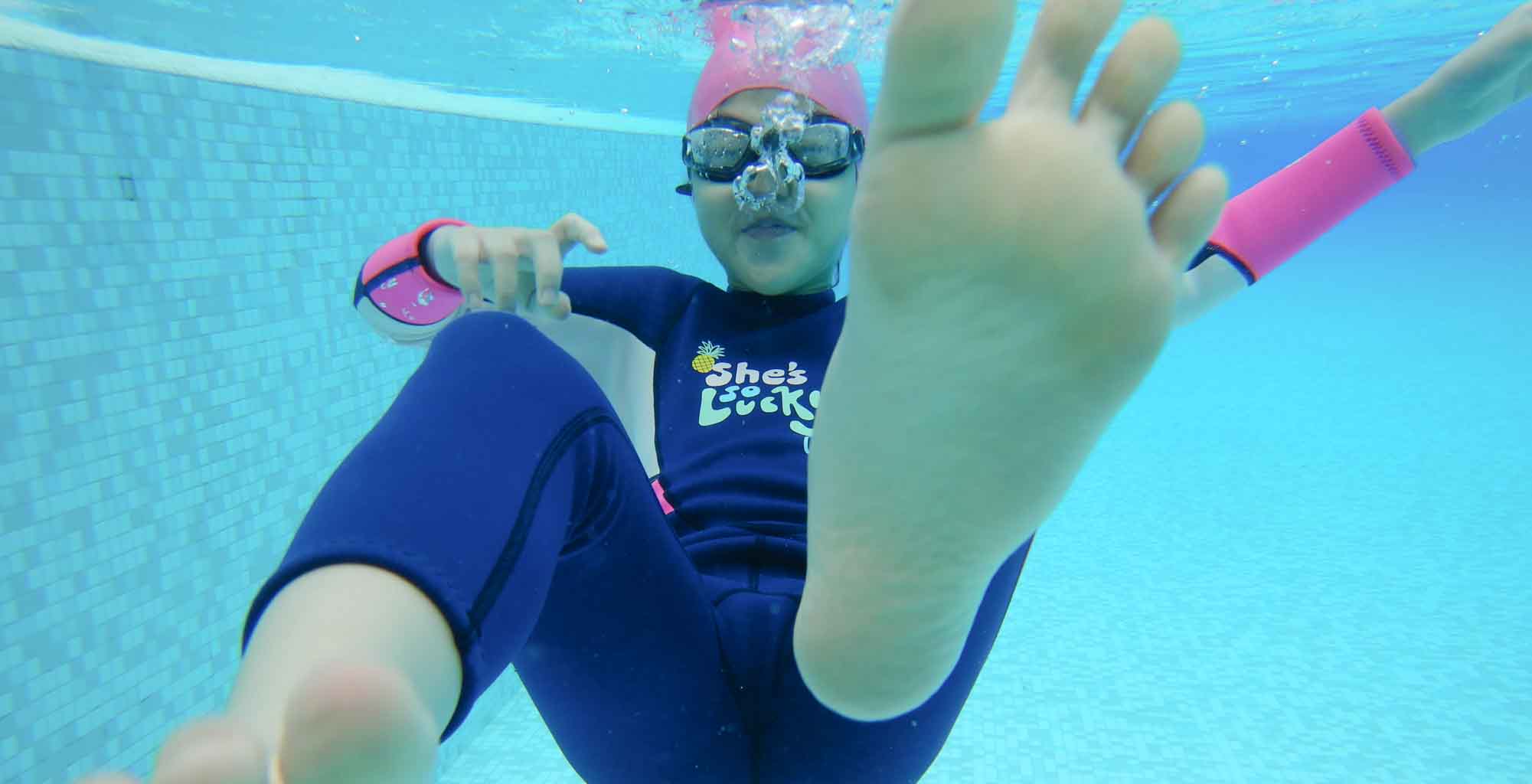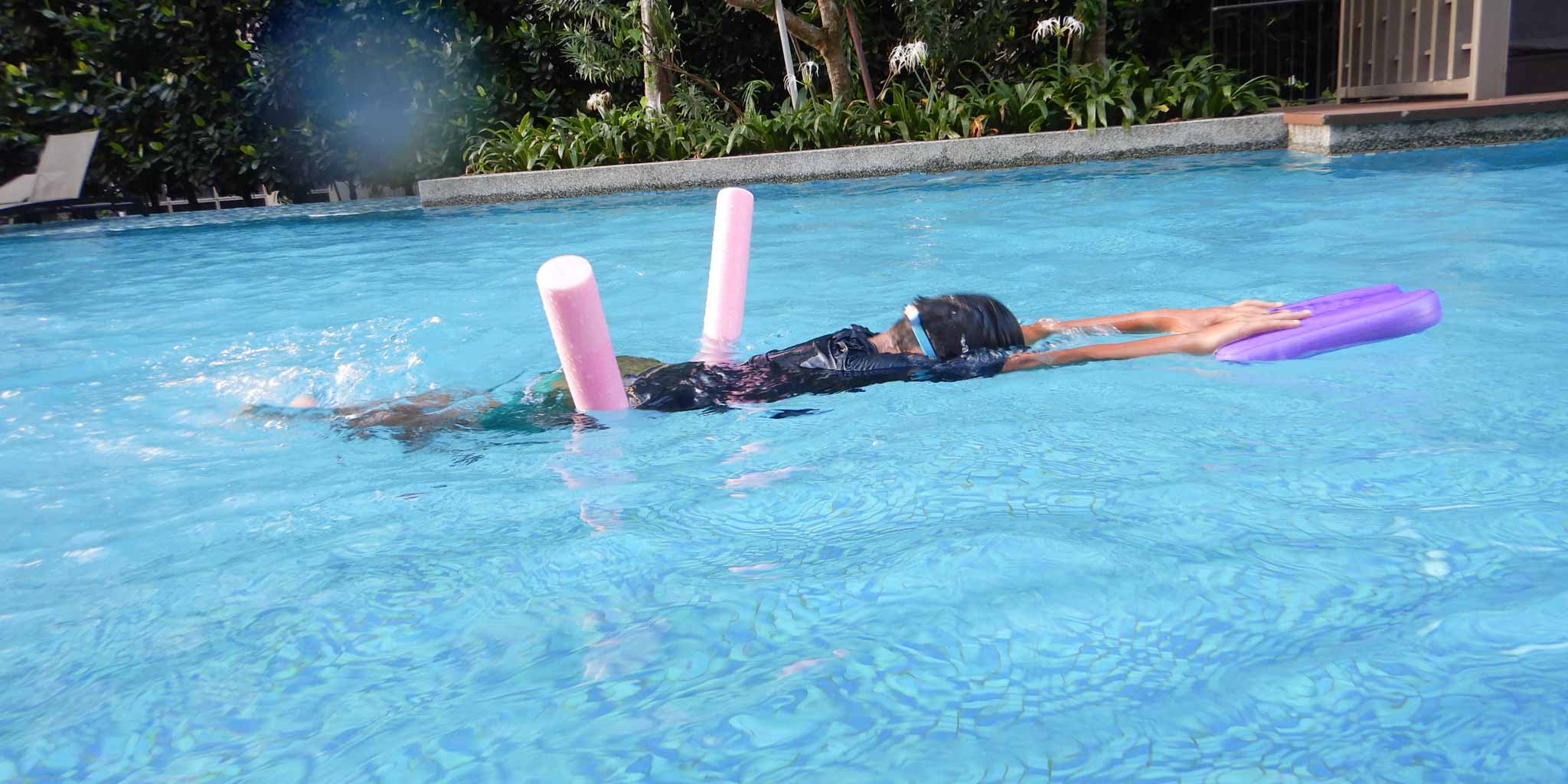Streamlining For Swimming
Decreased resistance is the goal of streamlining. Streamlining your swimming does not necessarily involve much effort but awareness, focus, and dedication. You need to hone your motor skills, become aware of the resistance your body is creating in the water and practice.
During the stroke cycle, streamlining also entails positioning your body and limbs to lessen the resistance of incoming water. It’s critical to time the adjustments to your alignment sequences.
Most of the freestyle stroke cycle is spent by skilled swimmers tipping their bodies evenly to one side or the other instead of maintaining a flat, central posture, which increases resistance. They concentrate on getting rid of any ineffective lateral and vertical body movements.
Maintain good head and body alignment during the stroke cycle to keep your body balanced and generate as little resistance as possible. Longer bodies will move through the water more quickly. You will learn how to identify pressure against your body at each stage of the freestyle stroke cycle by completing the following streamlining exercises or flow shapers. Swimmers can learn to produce and recognize specific flows in the water by practicing with flow shapers. They have favorable effects because they coordinate the hand and arm for a precise stroke pattern.
Streamlining Drills
Learn the correct way to streamline your body out of the water to start. Extend your arms above your head and place one hand on the water’s surface while standing on a pool deck or in shallow water. Put your top hand’s thumb over the bottom hand’s pinkie side. Put the inside of your arms against your face, directly in front of your ears, and extend your fingertips to the sky.
Squeeze your body in the direction of its midpoint. If possible, enlist a partner to assist you in adjusting your alignment. You can simplify yourself more by bringing your shoulders up toward your ears.
Boat Drill
Push off from the wall while in the water in a streamlined position with your torso and arms extended. Your form will resemble a ship’s bow. Maintain the streamlined position by contracting the muscles in your core, trunk, and fingertips. Can you glide after your push? How far? If you’re on the surface, do you glide further?
Practice shaping your body to resemble a barge, an ocean liner, or a destroyer. These different iterations of the ship practice demonstrate how the barge’s movement differs from the destroyer’s more erratic, clumsy flow. To feel the pressure of the approaching water, turn your head away from the long axis of your body.
Kick with the head first.
Hold your arms at your sides, maintain a neutrally aligned spine on the water’s surface, and add a light, relaxed flutter kick. To take a breath, rotate your entire body while keeping your head, neck, and spine properly aligned.
Kick while leading with one arm.
Your body should be balanced and streamlined as you extend your right arm forward, hold your left arm out to the side, and start to flutter kick lightly. Consider a world without noise or whitewater. Strive to feel like you are moving downward while maintaining your ideal body stance. Repeat the exercise with the left arm extended, rotating to the right side to breathe while you roll your left side down and allow your right side to spin toward the surface.
Kick when recovering underwater.
Extend your right arm in front of you for six to ten minutes while keeping your left arm by your side. Pull your right arm through to your side as you roll onto your left side and recover your left arm forward underwater. In the natural course of the stroke, breathe to your right.
This breathing exercise focuses on relaxing your face, jaw, and neck muscles. Maintain an extended body line throughout the exercise and breathe with your head parallel to your spine. By doing this, you can keep your equilibrium while you switch sides. Think of yourself as a long boat once more.
Clock Drill
Lay on your side with one arm extended in the water in a streamlined position and the other arm extended out of the water with the fingers pointed up at the hour mark. Holding this stance for one to two seconds, stretch forward into the entry position while bending the elbow of the arm above the water. Continue the drill by slipping your underwater arm through the switch on the opposite side. Keep your body in the alignment you developed during the streamlining sequence. The majority of masters swimmers would find this drill difficult. Fins can be used for this and other exercises by swimmers with restricted ankle flexibility. Still, they should be careful not to over-kick or become dependent on them for body placement.



